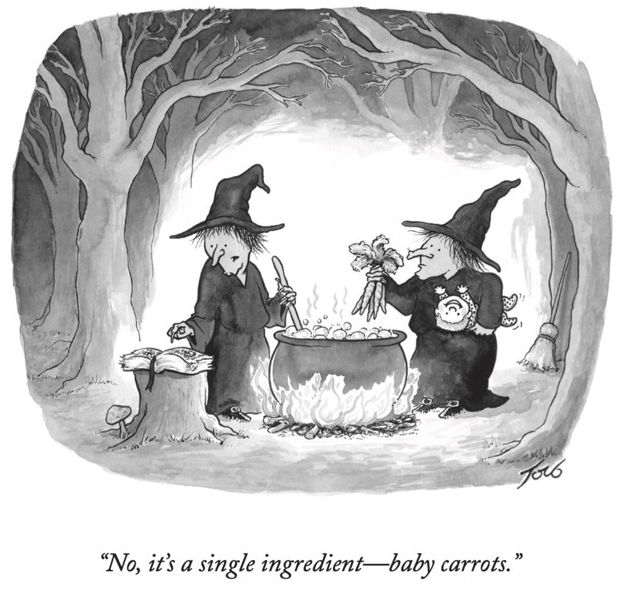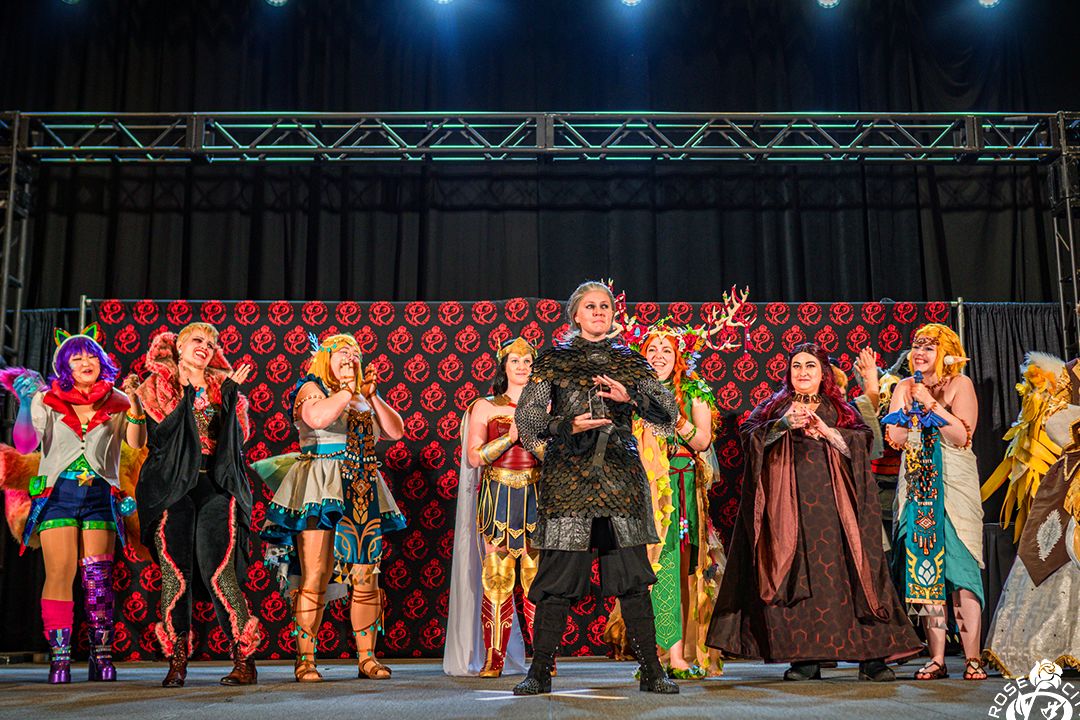Portland’s New Yorker Cartoonist on the Important Kind of Jokes

Image: Courtesy Tom Toro
Tom Toro didn’t grow up reading The New Yorker. “We did not subscribe to it,” he told me over coffee recently. He didn’t read it in college, either. In the aughts, after growing disenchanted with his dream of becoming a Disney animator, he decided cartooning would be his lot in life. When he learned, in the wake of the Great Recession, that The New Yorker was the primary outlet still publishing cartoons, cracking the code of America’s idiosyncratic intellectual stand-by became his mission. Until that point, The Far Side, Calvin and Hobbes, Ren & Stimpy, and South Park had been his guiding lights (“all those ’90s dudes”). Toro, who’s lived in Portland since 2019, says a cocktail of hubris and naivety eventually helped him break into The New Yorker’s cartoon department, which has been publishing his work for the past 15 years.

Toro’s first book of cartoons, And to Think We Started as a Book Club… (Andrews McMeel Publishing), is out this month. It collects his work for The New Yorker as well as a few cartoons published in Playboy, Yale Climate Connections, and elsewhere—a spread that indicates the range of his humor. His cartoons depict everyday quips between couples and friends at coffee shops as well as existential questions on the grandest scale: God, Jesus, the Four Horsemen of the apocalypse, et al. Often, they make it clear that one isn’t so different from the other.
Matthew Trueherz: Maybe it’s because it’s the season, but this one got me. It’s two witches. One’s holding a baby and a handful of carrots, and the other is consulting a recipe, saying, “No, it’s a single ingredient—baby carrots.” Apologies for the sugary run-up, but is there a recipe for a good cartoon, a certain something that every balanced, effective, affecting cartoon has?
Tom Toro: A good recipe for a good gag cartoon is, like, you introduce some incongruity in the image. The image poses a question that the caption answers in a surprising way—if there is a caption. The sort of Platonic ideal of a cartoon is one that just works at the image level. It doesn’t even need words, because it solves itself. This one, for example, it’s like a slightly elevated pun, right? There’s a life beyond the panel. You sort of imagine, How did this witch get carrots and a baby? And also, What possible hex spell would they be casting that required baby carrots? You want to also diffuse the transgression of the image a little bit. There’s a baby about to be thrown into a cauldron. So the caption has to bring it down from that level of danger. You don’t actually want anyone to get hurt in the cartoon. So it’s like, “They’re not going to use the baby in the spell!”

Image: Courtesy Tom Toro
MT: Was there a moment for you when things aligned, and—to belabor the metaphor even more—you realize you could cook?
TT: When I sold my first cartoon, back in 2010, I perversely went back and counted all the rejections I’d endured. It was my 610th cartoon that [The New Yorker] ended up buying. It’s a saloon scene, and there’s two cowboys sitting in a bar, and there’s a saloon door. Above the saloon door, you see a cowboy about to enter, but below the saloon door—you know how they’re sort of…you can see the bottom?—there’s no body, no legs. And one of them is saying, “That there’s one bowlegged cowboy.” You imagine his legs spanning the entire width of the door. That was the one where I finally realized, This is a recipe that works. It’s the visual incongruity, and then the caption solves it. He’s not like, bifurcated; he’s not beheaded. He’s just really bowlegged.
MT: The joke is kind of that there isn’t really a joke.
TT: You can’t put a hat on a hat. If the caption is also absurd, yeah, we have less identification with it. But it’s like, Oh, you’re just bowlegged. The beats worked, and there was a cleanness to it. I was like, Oh, this is kind of the formula. You develop a sixth sense.

Image: Courtesy Tom Toro
MT: 610, over how many years?
TT: That was like two years. I look back at that 610 and they weren’t all, like, undiscovered masterpieces. I was very much learning. You eventually home in on your own voice and style, and the marriage between those two. Certain styles can give rise to certain jokes. Some people draw in a way that allows them to deliver jokes. Edward Koren, I’m thinking of. He passed away in 2023—a great New Yorker cartoonist who drew very, very weird, fuzzy sort of humanoid creatures. He could almost deliver jokes that weren’t even jokes, just because they looked so charming and funny.
MT: That feels like stand-up. So many of the best stand-ups, their jokes aren’t funny at all unless they’re telling them.
TT: Yeah, exactly. It’s weird being a cartoonist, though, because your audience is the readership of The New Yorker. But really, to sell a cartoon, you’re trying to please two people in an office in Manhattan. As a West Coaster, too. When I first broke in, I was living in California, in the Bay Area where I grew up. Every November, December, January, I would have to remind myself to put coats on my characters and sprinkle snow on the sidewalks. It’s an international publication, but it also maintains this provincial, maybe it’s faux provincial….
MT: The New Yorker style, the infamous “house voice,” which I think continues to the cartoons. They all have a certain brand of humor. What has your experience been trying to fit into that?

Image: Courtesy Cheshire Isaacs
TT: You’re trying to thread two needles, where your stuff wants to be individual enough that there’s a reason they’re buying the cartoon from you, but it has to be suitable for The New Yorker. So how can you be as much yourself as possible while still being appropriate? I think that might be the knock against New Yorker cartoons, that they’re, like, not funny—because they’re not able to push as far as we would like. I don’t think it’s true, by the way, but I think it might be because there’s a mildness to them—there’s more emphasis on cleverness than transgression.
MT: There’s a refrain that sometimes New Yorker cartoons are intentionally inscrutable, either nonsense or a sort of intellectual barrier. That’s not your lane much, though there’s one in the book with a very long caption.
TT: Oh, Edward J. Runt the pig? [The runt of a litter sits at a typewriter in a pigpen and writes of his “gluttonous kin, who have taught me the cold comforts of solitude, philosophy,” and so forth.] Sometimes the joke is that it’s overwritten. You have to remember that this stuff is embedded in, like, Pulitzer Prize–winning journalism, right? It’s almost like, Why are the cartoons there?
MT: Why are the cartoons there?
TT: That’s a great question. I hope the editors don’t ask themselves that too closely. It’s definitely an appendage of the origin of the magazine, where it was much more of a cultural artifact. That was an upstart, Jazz Era thing. There was a huge emphasis on the art, on the cartoons. And they’ve endured because of unique talents like Charles Addams, Roz Chast. If they had to redesign the magazine from scratch now, I wonder if they would still include them. But I think there’s something about it, which is that the articles are extremely long. They’re very dense, and you need palette cleansers, right?
MT: We have fun here.

Image: Courtesy Tom Toro
TT: They want to let the journalism do the journalism. So the cartoons are meant to be intentionally not that. It’s like slipping a note to a friend during class. The fact that they’re there is almost subversive.
MT: That conspiratorial smirk.
TT: There’s something brilliant you should be learning that’s going on. But we have time to goof off over here.
MT: You definitely gravitate toward that dynamic. A lot of your cowboy bits, or the witches, or the biblical stuff—these interpersonal little, out-the-side-of-the-mouth jokes, where the humor is that you’re saying it in an inappropriate situation.
TT: That’s why I feel this sort of deadpan works really well. I don’t have my characters over acting. Often the eyes are just dots. Often only the speaking character has a mouth. You want it to be as blank-slate as possible. The less I tell the reader how to respond, the more you can imprint your own impression on the cartoon, and take from it what you will.
MT: You joked before about, if they were to build The New Yorker from scratch today, it may not be super logical to include the cartoons. In all seriousness, do you think cartoons are important today?
TT: [laughs] I think so. I honestly do. Part of it is, I think they’re almost more relevant today. They’re almost ideally suited to our social media–addled…. It’s like: image-caption, image-caption. Like, they are Instagram, basically. On the political end of things, Ann Telnaes quit The Washington Post over her cartoon about Jeff Bezos and all the tech oligarchs like, worshiping at the statue of Trump. [Telnaes, a Pulitzer Prize–winning cartoonist, resigned after her cartoon was rejected by the editor of the paper’s editorial page. Jeff Bezos owns The Washington Post. “We are visual opinion makers,” Telnaes told NPR.] Yeah, so, they’re still capable of wrankling sensibilities.
Toro will be in conversation with former OPB president and CEO Steve Bass at Powell’s City of Books Friday, October 10, at 7pm.




